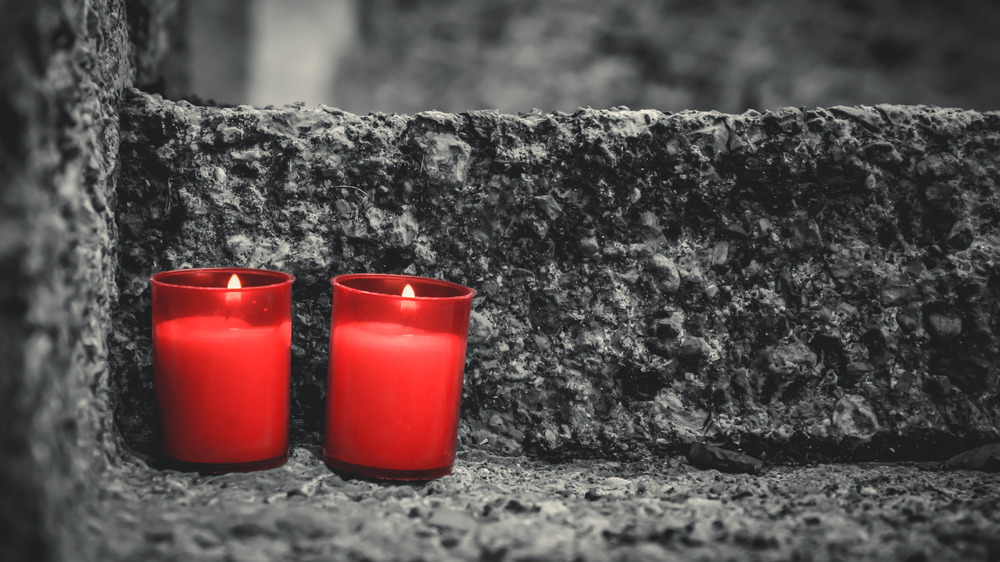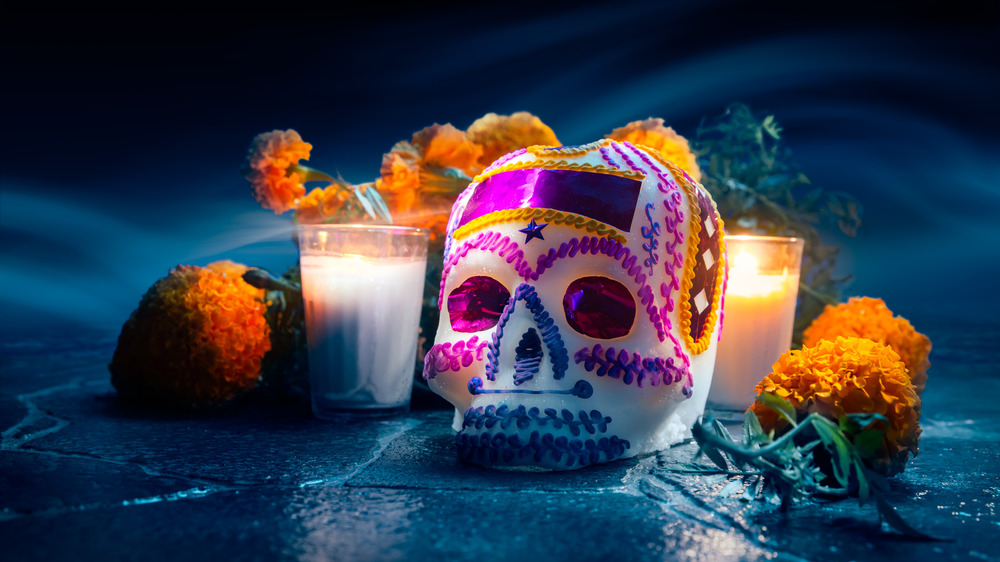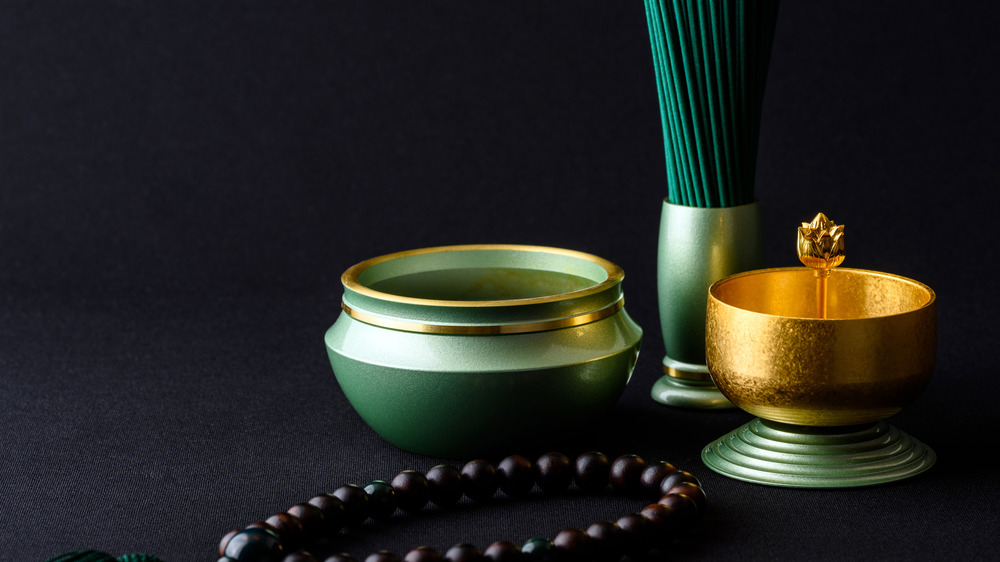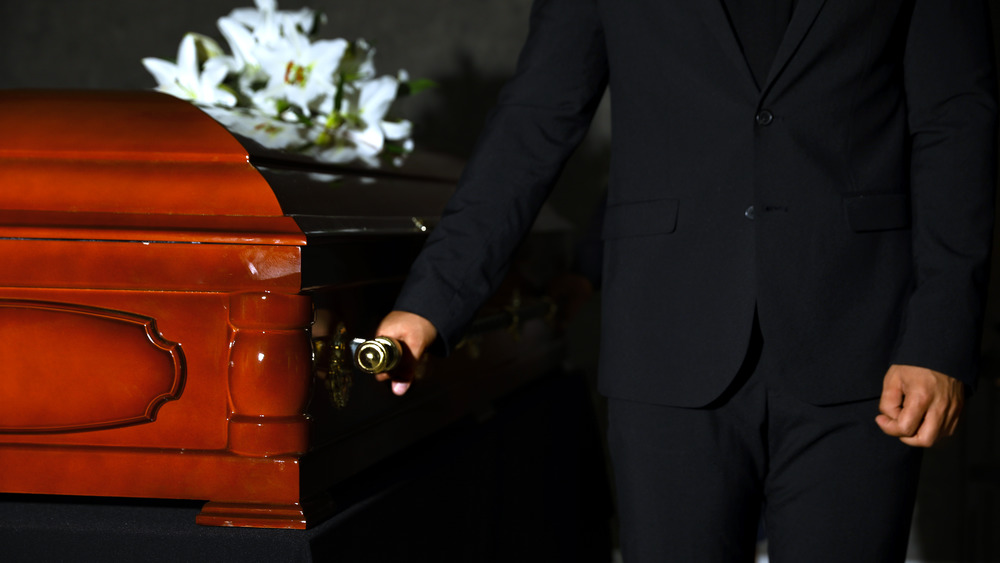The Truth Of The National Museum Of Funeral History
"Any day above ground is a good one."
This quote, placarded on the bottom of every page on the National Museum of Funeral History website, embodies what the museum is all about. In fact, it might be a misnomer to call the place merely a "museum." It's more of an interactive, respectable, matter-of-fact tribute to the inevitable phase of life that many shy away from discussing: death. Whether someone chooses to be buried in a casket, cremated, or composted, and barring some sci-fi tech that prolongs life to the length of a character from Highlander ("There can be only one!"): all of us will one day face the Great Beyond. As the museum's FAQ gracefully states, "The Museum is an excellent neutral place to introduce children to the concept of death, which is a natural part of life and nothing to be feared. Inevitably, we all have someone in our lives die, so when that does happen, it won't be such a difficult concept to discuss if they've already been introduced to it at the Museum."
The museum has 16 exhibits, including those on antique hearses and casket creation, funeral services from Mexico and Ghana, tributes to popes, a 19th-century mourning exhibit to learn about customs, a history of "jazz funerals" of New Orleans, an embalming history exhibit, obituary-writing resources, tours for families, resources for teachers, and a tongue-in-cheek memorabilia shop. The entire museum can be rented for memorial services, lock-ins, Halloween parties, corporate events, and more.
Waxen popes, Ghanian coffins, Mexican ofrendas, and more
The big ticket items at the National Museum of Funeral History, located along I-45 north of Houston, Texas, are its exhibits.
Care to gaze at waxen visages of deceased religious leaders? Celebrating Lives and Deaths of the Popes has got you covered (there's even a replica of Pope St. John Paul II's crypt). The museum states that they worked directly with the Vatican for three years to build life-sized, prop-filled, dioramic scenes meant to convey a sense of what it's like to attend a pope's funeral.
Interested in having a commissioned custom coffin crafted in the shape of a leopard, crab, or Mercedes Benz? Fantasy Coffins from Ghana awaits you. Sculptor Kane Quaye from Accra, Ghana, has helped the museum set up an exhibit — the largest outside of Ghana — showcasing how Ghanaians can "secure spiritual favor for the family left on earth" by building a sweet post-life vessel for their ancestors.
Curious to learn more about the gorgeous Mesoamerican artistry and traditions of Día de los Muertos (Day of the Dead)? Pop over to Día de los Muertos and check out ofrendas (memorial altars) or stroll through a recreation of a "traditional Mexican home and graveyard" as they appear on November 1 and 2.
Don't miss Victorian etiquette regarding the deceased, the history of cremation, old Japanese hearses, and monuments to fallen soldiers.
An educational hub for children, adults, and teachers
The National Museum of Funeral History was built in 1992, and as their education page shows, they've had enough time to think about the needs of the public.
Teachers can take kids on field trips to explore a bit of American history at the Presidential Funerals exhibit, covering presidents like George Washington, Gerald Ford, and Abraham Lincoln. It includes artifacts like a replica of the derringer that John Wilkes Booth used to shoot Lincoln, and an actual memorial badge worn at the revered president's funeral. Heck, there's even an exhibit in honor of George H.W. Bush that explains his custom-made "4141 train" Union Pacific train, shown on the UP website. Plus, let's be honest: it's a good chance to loosen the kids up with some mortuary jokes.
Speaking of children, the museum is intended to be kid-friendly, contains nothing "gruesome or spooky," and admits those over the age of 7, as the families' page states (although they say their youngest guest was 4). The museum's very sensible approach to death as something to be discussed, demystified, and not feared, represents a powerful shift in thinking that lots of folks would be wise to adopt. Have a gander at the images gallery if you doubt the wholesomeness of the museum's experience.
And for those who want a "In Dog Years I'm Dead" t-shirt, as the museum's shop page shows, you're a shopping cart entry away from purchasing your partner's next birthday gift.
Eulogy and obituary writing resources offered en masse
Probably one of the most impressive and sympathetic services offered by the National Museum of Funeral History is its obituary and eulogy writing resource page. At the moment we lose a loved one, despite all wherewithal about death's inevitability, the experience itself can be crushing. Logistical complications of wakes, funerals, services, announcements to family and friends: It can seem like a slap in the face even though it may be an ultimately helpful, ritualistic way to deal with grief. And obituaries and eulogies? They can be particularly tough. How can we sum up a life?
The museum's "How Do I?" page explains the differences between an epitaph (the bit we write on a tombstone), a eulogy (a statement made at the service for the deceased), an obituary (the written part that is published), and also provides information on wills and testaments, the difference between a living will and a last will, DNR ("Do Not Resuscitate") vs. DNI ("Do Not Intubate"), and a lot more.
Parking at the National Museum of Funeral history is free for those taking the trip. Check out the museum's clean and classy map page for an idea of what to expect. The building is wheelchair accessible, and everything inside is self-guided. Full-priced adult tickets are an affordable $10 (discounts for groups, the elderly, children, etc.). In 2021 the museum will be hosting its 27th annual fundraising event, the National Museum of Funeral History Charity Golf Classic.



